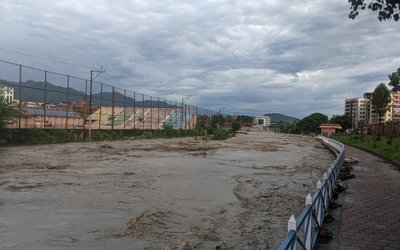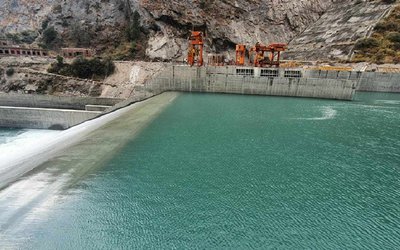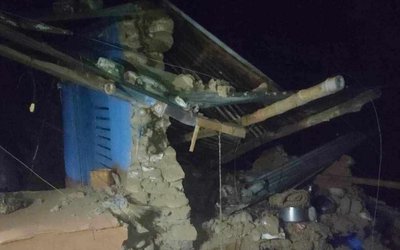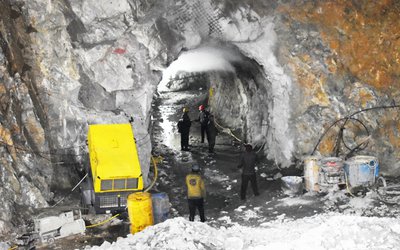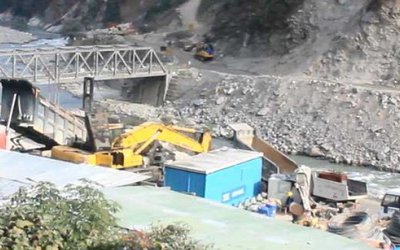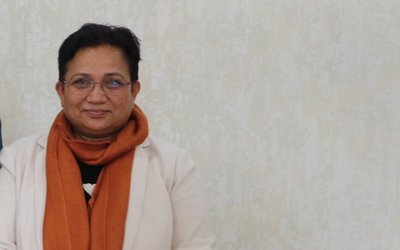
Member of Electricity Regulatory Commission of Nepal Ram Prasad Dhital said that there is a gap in financing in energy sector. "In what the country requires 2.6 billion US dollar annually only for electricity access, only 1 billion has been invested," said Dhital.
Inagurating a day long "Energy that transforms – the road to 2030", Dhital said invetments from private sectors can play a huge role to bridge this gap. He also laid stress on need for loan based financing to the grant based financing.
The energy fair was a part of Energy that transforms – the road to 2030.
Joint Secretary of Ministry of Energy, Water Resources and Irrigation Dilip Kumar Sadaula appreciated the fair and mentioned the need for strong collaboratio among all the sectors to address the issue.
Director of Alternative Energy Promotion Centre (AEPC) Dr. Narayan Prasad Adhikari shared AEPC's commitment to support local and provincial government to strengthen and ensure exclusivity and scalability in policy and practices.
During the event, Practical Action's South Asian Regional Director Achyut Luitel shared about Practical Action's active engagement in not just taking energy for domestic use but for transformative use triggering local economy by enhancing productive and social use. South Asia's Energy Program thematic lead Pooja Sharma shared about the findings and pathways of PPEO 2018 and 2019 which highlights on some eye-opening researches and solutions.
According to a study, the total per capita electricity consumption in Nepal is 233 kWh. Overall 12 per cent of Nepalese population still live without electricity access with Karnali Province lying at the bottom in terms of electricity access. Overall 63 per cent of Nepalese are still using traditional biomass cooking which in major contributor to indoor air pollution that is the leading cause behind respiratory illnesses related deaths of above 20,000 people annually.
With just over 10 years to 2030, we are a long way from achieving the Sustainable Development Goal 7 (SDG7) of universal energy access. Despite some progress, obstacles remain. Proving particularly difficult is reaching the ‘last mile’: those whom business-as-usual approaches will not reach due to income, remoteness or social discrimination.
Accoprd a press release issued by Practical Action, to help more people harness the transformational effects of clean affordable energy and to reduce avoidable deaths caused by smoke from indoor stoves and fires, Practical Action is working to boost the track to achieve universal energy access by 2030. In order to co-create an inclusive environment to achieve the target, we need research groups, academics, private sectors, enterprises, donors, technocrats, policy makers, solution-minded youths, creative thinkers and journalists to work together. And this fair is an attemp to boost the synergy. So as to contribute in identifing best approaches to address the ground challenges, Practical Action brings out its global flagship report Poor Peoples' Energy Outlook (PPEO) every year which is based on extensive research around the world's energy situation.



- Weather Forecast: Partly To Generally Cloudy With Rain And Thunder Acrosss Nepal
- Apr 19, 2025
- Minister Dahal Directed To Complete The Dannune Portion Of Road Before Monsoon
- Apr 18, 2025
- Kanchenjunga Diamond Festival Being Celebrated From Today To Mark The 70th Anniversary Of The First Successful Ascent
- Apr 18, 2025
- RPP To Hold Protest In Restricted Areas Of Kathmandu On April 20
- Apr 18, 2025
- Weather Forecast: Partly Cloudy With Rain And Thunder In Kathmandu, Pokhara, Biratnagar And Janakpur
- Apr 18, 2025
